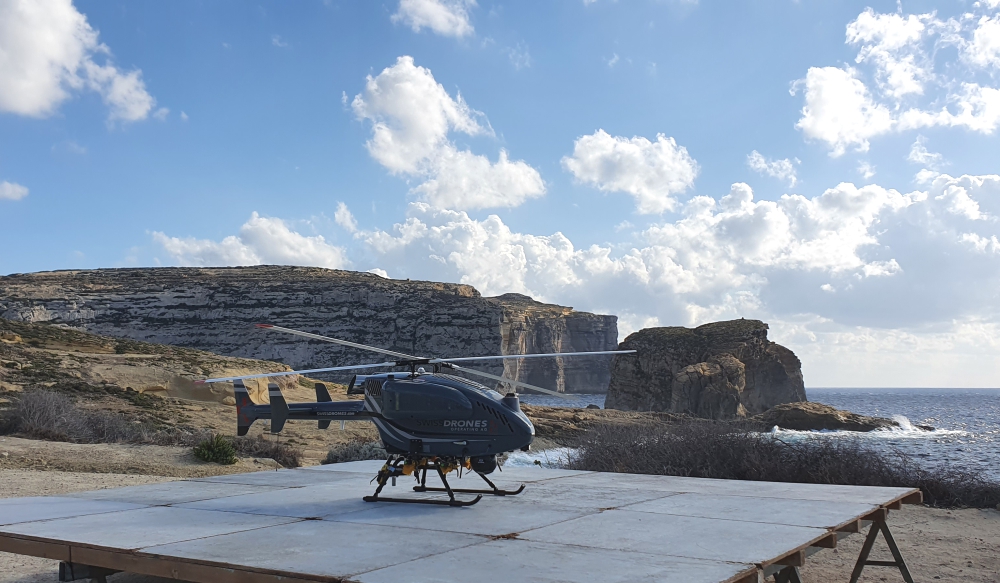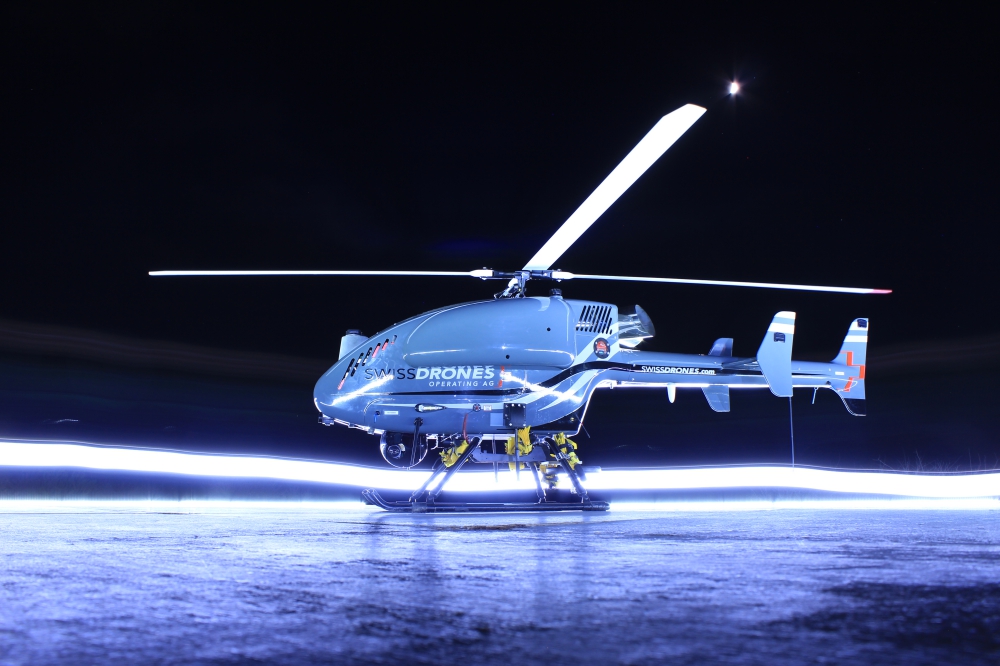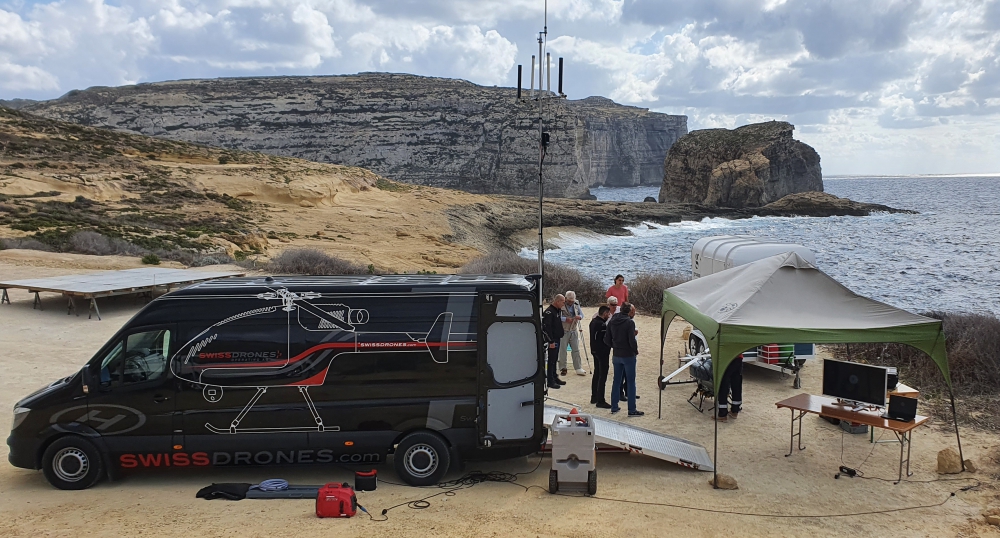Strategically positioned between Europe, the Middle East and Africa, Malta has a long history in the maritime aviation arena, starting with the construction of its first seaplane base at Kalafrana in 1916 and the launch of commercial flight operations in 1926.
Building on this expertise, the country now aims to position itself as a global hub for drones and advanced air mobility (AAM). This week, the country took a big step towards achieving this.
Transport Malta Civil Aviation Directorate (Transport Malta), the country’s Civil Aviation Authority (CAA), and SwissDrones, a global manufacturer of long-range unmanned helicopter systems, conducted a series of long-range Beyond Visual Line of Sight (BVLOS) flights over water for rigorous maritime patrol, search and rescue, and surveillance mission simulations. Additional flights were conducted to test and validate communication and sensor payloads.
The flight operations were enabled through close coordination with Transport Malta, Malta Communication Authority, Malta Air Traffic Services, Enterprise Malta, Indis Malta, and the San Lawrenz local council.
All operations were executed in accordance with European Union Safety Administration (EASA) regulations for unmanned aircraft under the Specific Category, with full authorization from Transport Malta.
“The Malta archipelago offers an ideal geographical location for flight testing in demanding maritime conditions over long distances,” said Ulrich Amberg, CEO of SwissDrones. “Additionally, the nation is a growing hub for robotics and aviation with world-class infrastructure and excellent government support, making it perfectly suitable for establishing a new base of operations.”
“We are impressed with SwissDrones’ meticulous and professional approach to conducting flight operations, as well as the unsurpassed engineering and quality of their aircraft,” said Charles Pace, Director General for Civil Aviation at Transport Malta CAD. “We thank them for selecting Malta for their maritime testing and validation and look forward to ongoing collaboration.”
SwissDrones utilized its SDO 50 V2 Vertical Take-Off and Landing (VTOL) unmanned helicopter system designed for a multitude of long-range missions in adverse weather conditions, day and night, and in a large spectrum of temperatures, without any risk to the crew.
The aircraft’s unique design features provide superior payload capacity (45 kg/99 lbs, including fuel), long endurance (3+ hours), stable flight patterns, the ability to carry single or multiple high-quality sensors, and a high degree of safety features. An integrated autopilot system enables autonomous take-off and landing procedures as well as autonomous flight patterns.
The SDO 50 V2 uses the Flettner system of intermeshing twin rotors turning in opposite directions. Each rotor mast is mounted at a slight angle to the other, allowing the blades to intermesh without colliding. This design enables its superior payload capacity, prolonged endurance, and stable flight patterns. It also allows the helicopter to function without a tail rotor, which saves power and allows for a significantly higher payload to weight ratio.
“It has been a pleasure working with the Government of Malta,” said Arangan Varatharajah, Head of Flight Operations at SwissDrones. “Each entity has been incredibly responsive and supportive throughout the entire application processes and we look forward to working closely together in an ongoing capacity.”
Source: Press Release


